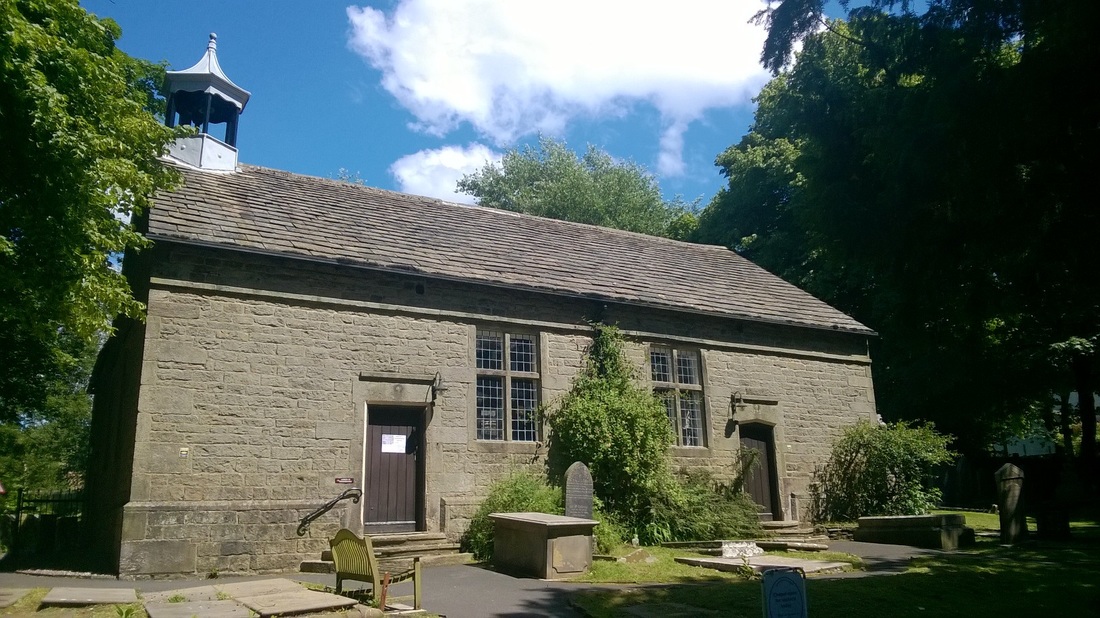We parked nearby and stopped off at the nearby church hall for tea and a cake before completing a 6 mile walk out into the countryside which took us through woods, across fields and dams, around reservoirs and along quiet country lanes.
Built in 1540 by Richard Pilkington, Lord of the Manor, Rivington Church was consecrated on the 11th October 1541 by the Bishop of Chester, Dr Bird. The church is thought to be built on the site of a former place of worship from the 13th century.
In 1566 the church was granted a charter by Elizabeth I. The charter decreed that the building should be used for sacrements and gave the people the right to choose their own minister. The original chest that held the document is still in the church but the charter is now kept at Rivington and Blackrod High School.
The church had a major rebuild in 1666 and the roof was restored in the 1800's.
In 1832 the church was badly damaged by an arsonist and in 1923 electric lighting was installed in the church.
The earliest reference to a church on this site is in a deed of 1280 mentioning three acres of "terra ecclesiastical" in Rivington. A Saxon font, found locally is housed in the church. When repairs were carried out to the flooring, the foundations of an earlier building were discovered which were possibly Saxon in origin.
The church is built of irregularly coursed sandstone. It is quite a small building with windows on each side. The nave is 55 feet 6 inches in length by 27 feet 6 inches in width and the chancel, 13 feet 6 inches by 15 feet 6 inches. There is a 19th century gabled porch between the centre and western windows on the south side and a modern vestry on north side. The west gable wall has an elliptical-headed doorway and there is an octagonal bell turret with square base and a conical roof. The roof is covered with green slates and finished with overhanging eaves.
The earliest visible gravestone in the churchyard is dated 1616.

 RSS Feed
RSS Feed
